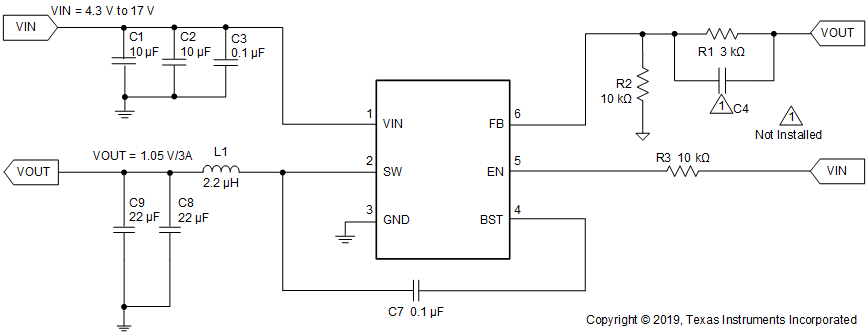SLUSDR7B January 2020 – April 2021 TPS562207
PRODUCTION DATA
- 1 Features
- 2 Applications
- 3 Description
- 4 Revision History
- 5 Pin Configuration and Functions
- 6 Specifications
- 7 Detailed Description
- 8 Application and Implementation
- 9 Layout
- 10Device and Documentation Support
- 11Mechanical, Packaging, and Orderable Information
Package Options
Mechanical Data (Package|Pins)
- DRL|6
Thermal pad, mechanical data (Package|Pins)
Orderable Information
8.2 Typical Application
The application schematic in Figure 8-1 was developed to meet the previous requirements. This circuit is available as the evaluation module (EVM). The sections provide the design procedure.
Figure 8-1 shows the TPS562207 4.3-V to 17-V input, 1.05-V output converter schematics.
 Figure 8-1 1.05-V/2-A Reference Design
Figure 8-1 1.05-V/2-A Reference Design